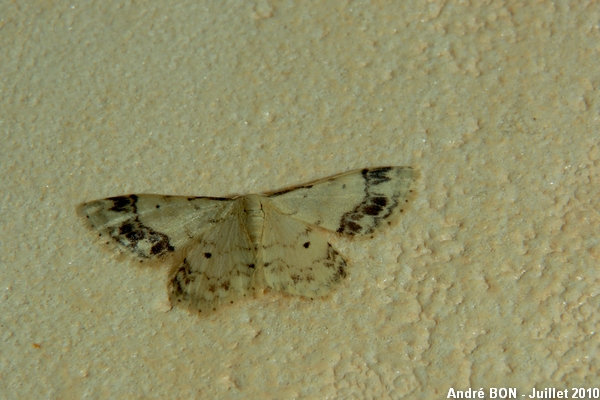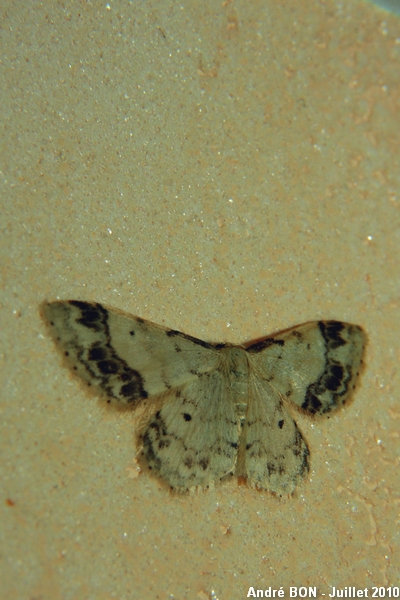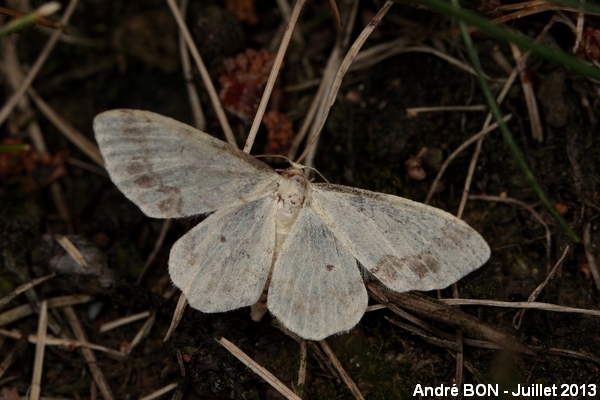


| Treble Brown Spot (Idaea trigeminata (Haworth, 1809)) |



|
|
Scientific name: Idaea trigeminata (Haworth, 1809) Common name: Treble Brown Spot French name: Acidalie retournée Order: Lepidoptera Suborder: Heterocera Family: Geometridae Subfamily: Sterrhinae Wingspan: 23-25 mm. Biotope: Woodland edges, hedgerows, sunny wastelands, "maquis" shrub lands. Geographic area: Southern Europe (everywhere throughout France), east to Lebanon. Flight time: June to July. Number of generations : 1 Caterpillar: Host plant: Many deciduous trees and low growing plants including Field Maple (Acer campestre), Birch (Betula sp.), Common Ivy (Hedera helix), Redshank (Persicaria maculosa), etc. |
The background colour of the Treble Brown Spot's wings varies from yellow to creamy-white. You can distinguish the Treble Brown Spot (Idaea trigeminata) from Idaea biselata by the well rounded dark patches in the sub marginal part of the fore wings. These patches are merged into an irregular sub marginal band on Idaea biselata. Idaea trigeminata also shows a black costal edge patch near the base of the fore wings. This patch is almost missing on Idaea biselata. The sub marginal part of Idaea trigeminata's hind wings is almost uniform while it shows the same marks as the fore wings on Idaea biselata. The Treble Brown Spot is attracted to light. |
| [To know more about the Treble Brown Spot] [Next picture] [Top] |

|
Attracted to light, this Treble Brown Spot has entered into the kitchen. Isn't it suited to the colour of the wallpaper? |
| [To know more about the Treble Brown Spot] [Next picture] [Previous picture] [Top] |

|
The Treble Brown Spot is a moth which is relatively easy to recognize. |
| [To know more about the Treble Brown Spot] [Previous picture] [Top] |

|
Here is one specimen with very pale colours. This is certainly due to its age. |